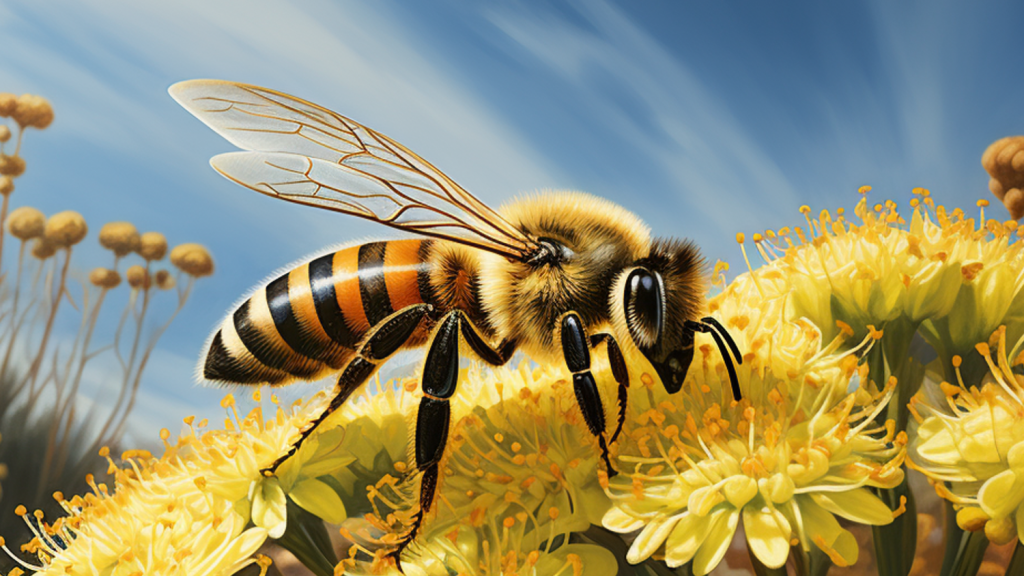I saw this question of plants that don’t attract bees come up in an online forum recently. While this isn’t something I’ve considered before, I can see the reason, and maybe need, to install plants that might be less attractive to bees in the home garden.
It’s important to note that most California native plants play a crucial role in supporting pollinators, including bees, some plants are less likely to attract bees than others. However, it’s essential to understand that excluding bees entirely from your garden may not be ecologically sound, as they are crucial for pollination and the overall health of ecosystems. That said, if you’re looking for California native plants that are less attractive to bees, consider the following options:
California Buckwheat (Eriogonum species)
Many species of California Buckwheat have small, inconspicuous flowers that are less attractive to bees.
California Fuchsia (Epilobium canum)
This plant has tubular flowers and is known to attract hummingbirds more than bees.
Coyote Brush (Baccharis pilularis)
This shrub produces inconspicuous flowers and may attract fewer bees.
Toyon (Heteromeles arbutifolia)
Toyon has clusters of small, white flowers that may be less appealing to bees.
Lizard Tail (Eriophyllum staechadifolium)
This plant has yellow flowers and may attract fewer bees compared to other flowering plants.
Coffeeberry (Frangula californica)
Coffeeberry has small, greenish flowers that are not as attractive to bees.
California Lilac (Ceanothus species)
While some varieties of California Lilac are known to attract bees, others have less conspicuous flowers.
California Sagebrush (Artemisia californica)
This aromatic shrub has gray-green foliage and small, inconspicuous flowers that may not attract many bees.
California Sage (Salvia species)
Some species of Salvia have flowers that are less attractive to bees. Examples include Cleveland Sage (Salvia clevelandii) and White Sage (Salvia apiana).
Mulefat (Baccharis salicifolia)
Similar to Coyote Brush, Mulefat is another Baccharis species with less conspicuous flowers.
Deergrass (Muhlenbergia rigens)
Deergrass is a clumping grass with feathery flower heads that may be less attractive to bees.
The trend I’m seeing in these are plants with small clusters of flowers. Bees may still try and get to these plants, it’s likely that the small flowers just aren’t built to give them the access they need.
For contrast, some plants like the Desert Museum Palos Verde in full bloom with it’s bright yellow flowers is a bee magnet and will be FULL of native and honey bees when in bloom.
Read: Starting a Native Plant Garden in Southern California Hardiness Zone 10
Remember that even plants that are less attractive to bees can still provide valuable resources for other pollinators, such as butterflies and hummingbirds. If possible, it’s best to create a diverse and ecologically balanced garden that supports a variety of wildlife. Additionally, the overall health of your garden and the surrounding environment can benefit from the presence of pollinators, including bees.
Why exclude bees?
While bees play a crucial role in pollination and contribute to the health of ecosystems, there are some reasons why someone might be hesitant to have bees in their garden.
Read: Native Plant Nurseries Around the San Fernando Valley
It’s important to note that bees are generally beneficial for gardens and the environment, but here are a few reasons someone might prefer to minimize bee presence:
- Allergies: Some individuals are allergic to bee stings, and the presence of bees in the garden could pose a risk to their health. In such cases, individuals may want to minimize the risk of encountering bees.
- Fear of Bee Stings: Even for those without allergies, there might be a fear of getting stung by bees. This fear could be due to past negative experiences or a general aversion to stinging insects.
- Outdoor Activities: If a garden is frequently used for outdoor activities, such as children playing or family gatherings, the presence of bees might be seen as a potential nuisance or safety concern.
- Concerns for Pets: Some people worry about the safety of their pets, particularly if they have dogs that might be prone to chasing or disturbing bees.
- Garden Aesthetics: Some homeowners or gardeners may have a specific aesthetic vision for their garden and prefer plants that are not heavily visited by bees. However, it’s essential to recognize that many pollinators, including bees, contribute to the overall health and diversity of a garden.
If someone has concerns about bees in their garden, it’s advisable to consider ways to coexist with these important pollinators rather than trying to exclude them entirely.
Creating a bee-friendly garden with a variety of plants, including those that attract fewer bees, can strike a balance between supporting pollinators and addressing specific concerns. Additionally, bee-friendly practices can help educate individuals about the importance of bees and their role in sustaining ecosystems.
Read: The Hori Hori Garden Knife: A Versatile Tool Rooted in History

4 responses to “California Native Plants Unattractive to Bees”
[…] Read: California Native Plants Unattractive to Bees […]
LikeLike
[…] Read: California Native Plants Unattractive to Bees […]
LikeLike
[…] Read: California Native Plants Unattractive to Bees […]
LikeLike
[…] hardy plants attract pollinators and provide habitat for local […]
LikeLike